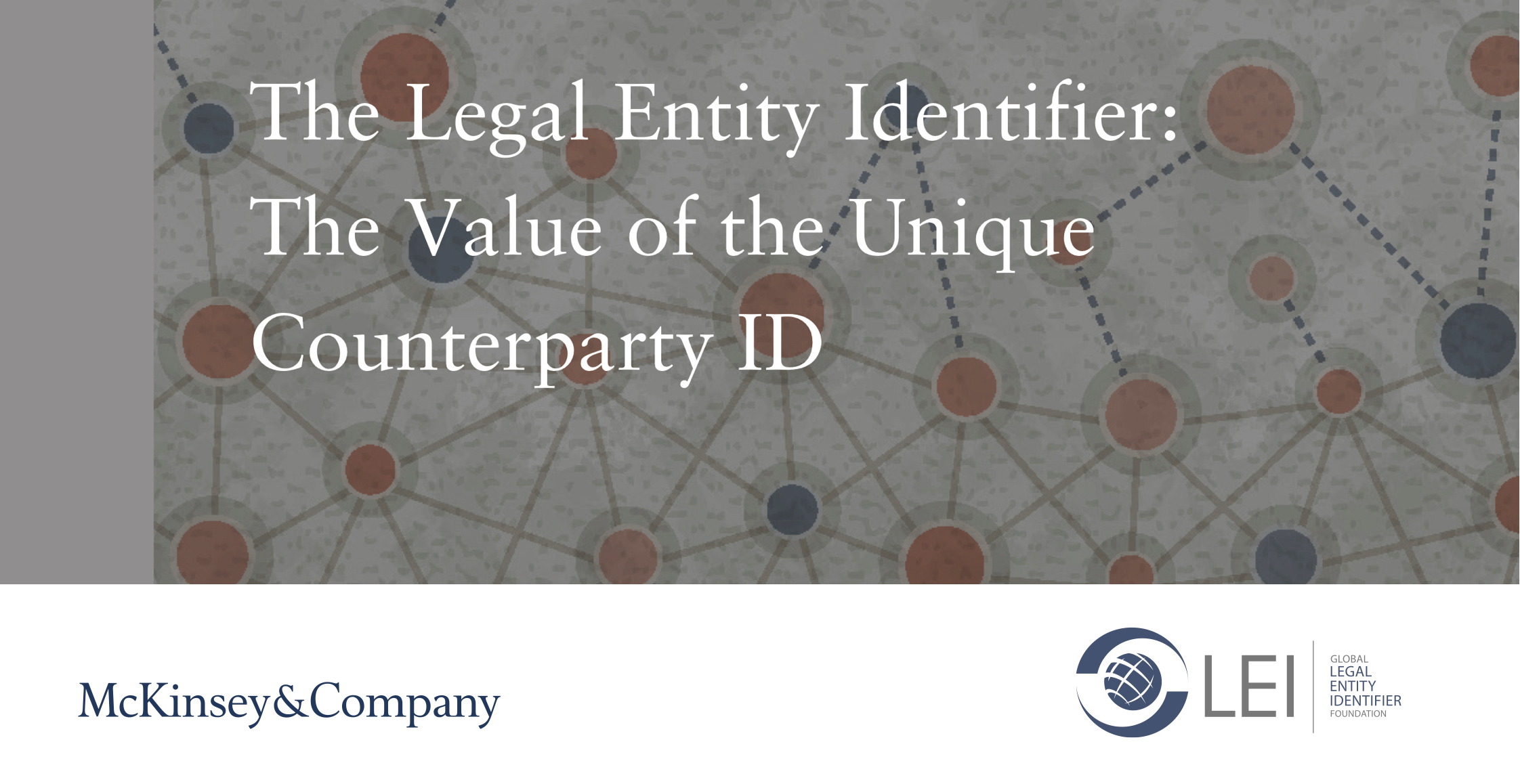McKinsey & Company and GLEIF White Paper: Creating Business Value with the LEI
McKinsey & Company has been working with the Global Legal Entity Identifier Foundation (GLEIF) to examine the potential use cases of the Legal Entity Identifier (LEI) in streamlining entity verification processes.
The resulting joint white paper, available for download below, estimates that broader, global adoption of LEIs could yield annual savings of over U.S.$150 million within the investment banking industry and up to U.S.$500 million for banks in the issuance of letters of credit. Annual savings in investment banking would include at least 10 percent of total operational costs for onboarding clients and trading processing through the use of the LEI.

LEIs create value in two ways:
- Reducing transactional and operational friction in the identification of transaction counterparties.
- Making important information about the background of a legal entity in a particular transaction more accessible and traceable.
Collectively, these benefits reduce the time spent on identifying counterparties and improve the reliability of information.
The white paper identifies three new use cases for LEIs: capital markets, commercial transactions and the extension of commercial credit. These are especially relevant to large corporations, small businesses and their banking institutions, and investment banks.
-
In capital markets, the LEI’s primary value is derived from reducing the costs associated with: onboarding clients; and of middle-and back-office activities related to the processing of stocks, bonds and other securities trades. All such activities could be simplified and streamlined if LEI usage was more broadly adopted throughout the lifecycle of the client relationship. Use of the LEI would also reduce the time spent on data correction and reconciliation.
-
In commercial transactions, LEIs would enable: faster processing of letters of credit; and better identification of sellers on e-invoicing networks.
-
In the extension of commercial credit, LEIs would allow for more robust and efficient know your customer (KYC) diligence on borrowers, as well as better traceability of information on borrowers from multiple sources.
GLEIF believes that this paper will broaden the understanding of LEIs and spark further debate about their cost saving and efficiency benefits. The research clearly illustrates the value of the LEI, but its broad application and adoption depends on the creation of a strong network of advocates. GLEIF is therefore actively encouraging organizations, especially large corporations, small businesses and their banking institutions, to work together to discuss and consider the adoption of LEIs in day to day processes.
Analysis undertaken as part of this project also indicates that there are multiple additional use cases beyond the three identified. Operational efficiencies, cost savings, reduction of time to transact with clients and more reliable information can be gained by introducing the LEI into almost any process that requires identification and verification of a counterparty and that has a manual component. This resulting easier counterparty identification will open the door to further automation and digitization of financial and commercial transactions across the globe.
For more information on how broad LEI adoption would remove complexity from onboarding client organizations and deliver quantifiable value to financial services firms, refer to the GLEIF research report titled ‘A New Future for Legal Entity Identification'.
To learn more about how the LEI brings efficiency, transparency and trust to legal entity identification, visit this dedicated GLEIF website page: Global LEI Index.
